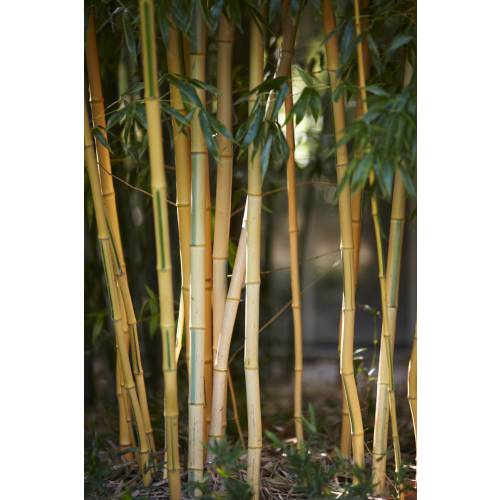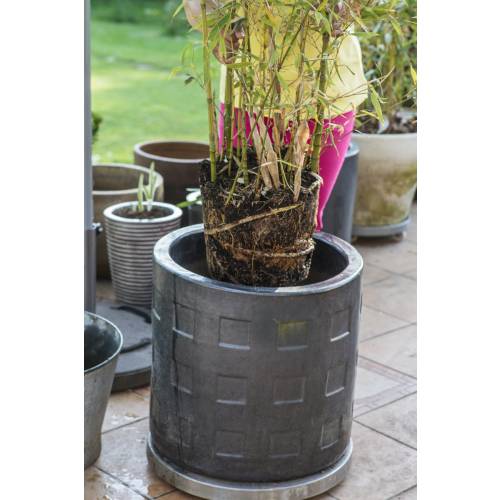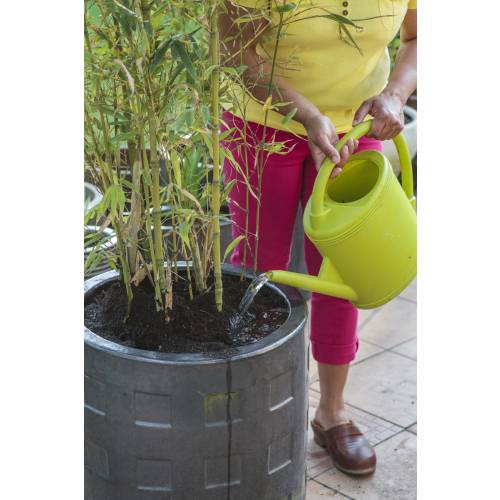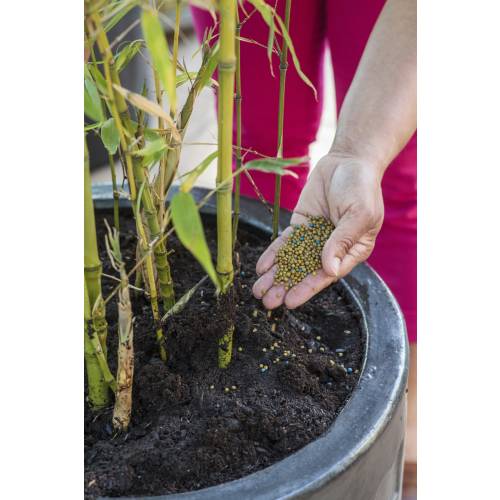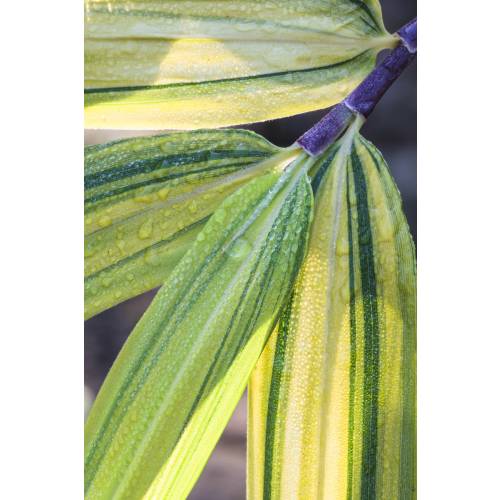
The growing of bamboo
Bamboo in a pot
- Details
-
It is green all year round, it is not bad-weather sensitive, thrives even in low light and confined spots and is beautiful in all seasons. Growing a Bamboo in a pot only presents advantages. Nevertheless some rules have to be followed to grow it successfully!
Which Bamboo?
The Bamboo ‘Fargesia' is without a doubt the best variety of bamboo to grow in a pot as it naturally forms a dense clump. It thrives in the shade or in a partially sunny site (no more of a few hours if it is in direct sunrays in the afternoon). It is perfect in a patio which receives very little light. On a windy, sunny terrace it is best to plant a Phyllostachys or a Sasa, although the range is extremely varied. Whether green, yellow, red, black, blue or variegated most of the Bamboos thrive in pots. Simply avoid the variety with large growth as they only give their best if they have a lot of space available.
The pot: think big
The majority part of the Bamboo's vegetation is found underneath the soil. For one stem, it has twice the volume of soil. For the best finish, plan for a deep planter, at least 45cm in depth and of at least 45cm in length or its equivalent if you choose a round pot. For a screen effect, plan for a width of 50cm. This represents a large planter which can be rather heavy on a terrace, especially if you need to place several side by side. The refined, resin planters or planters made of high-quality plastic are a lot more suited to the modern look of Bamboos.
Low maintenance
Bamboos require two things: water and food. For watering, set up an automatic watering system. A big planter full of Bamboos can evaporate as much as 15l of water in the heart of summer and irregular watering can be lethal especially when drying winds start to blow. As for food, the easiest way to supply it is to use slow-release fertiliser or coated fertilizer (also called delayed-fertilizer). Bamboos like fertilizer in a liquid form. You must supply them with liquid fertilizer once a month from October to March, then every fortnight during the rest of the year. In other words, they are rather greedy!
Repotting is more complicated
In developing, Bamboos are going to form a lot of rhizomes which are difficult to separate. To repot the clump, the easiest way is to replant it (without the pot of course!) in a bigger planter, larger by at least 5cm. But this will not happen before three to four years...
Trade secret
Bamboos grown in pots have the tendency to thin out at the base, as they can't produce these small stems on the edges, as a normal clump usually does. To ward off this problem, simply plant at the same time a dwarf variety which grows to 50cm or 1m. The two of them will co-exist in the pot! - Photos (5)

